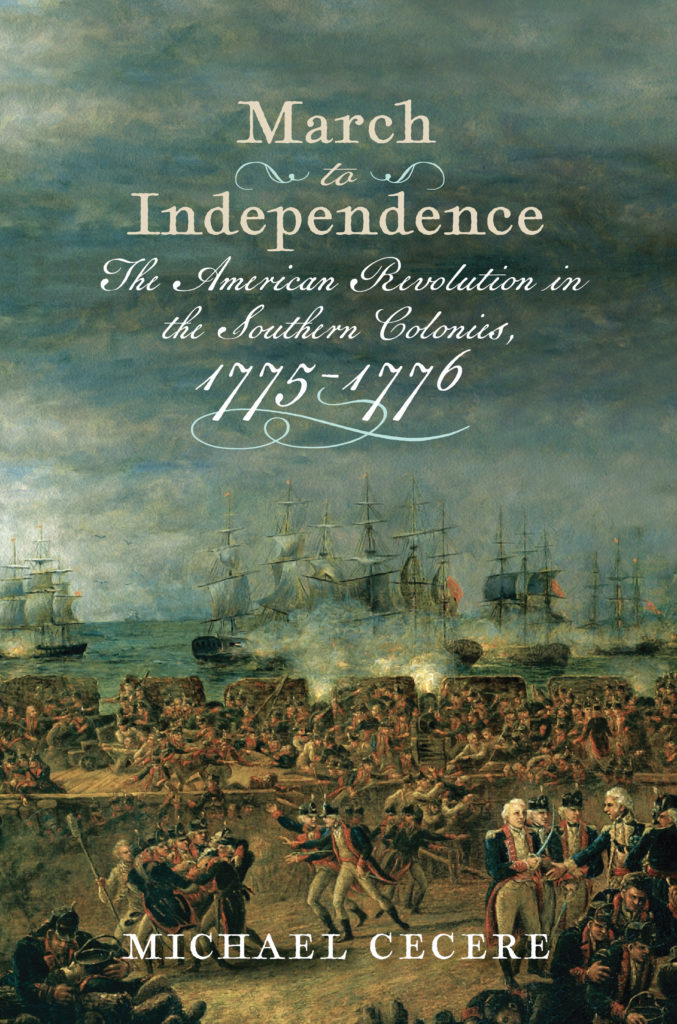About This Book
A Journal of the American Revolution Book
The American Revolutionary War began when Massachusetts militiamen and British troops clashed at Lexington and Concord on April 19, 1775. Two months later, a much larger engagement occurred at Bunker Hill in Boston. The conflict then expanded into a continent-wide war for independence from Great Britain. Or so we are taught. A closer look at events in the South in the eighteen months following Lexington and Concord tells a different story. The practice of teaching the Revolutionary War as one generalized conflict between the American colonies and Great Britain assumes the South’s support for the Revolutionary War was a foregone conclusion. However, once shots were fired, it was not certain that the southern colonies would support the independence movement. What is clear is that both the fledgling American republic and the British knew that the southern colonies were critical to any successful prosecution of the war by either side.
In March to Independence: The American Revolution in the Southern Colonies, 1775–1776, historian Michael Cecere, consulting primary source documents, examines how Virginia, North Carolina, South Carolina, and Georgia ended up supporting the colonies to the north, while East Florida remained within the British sphere. South Carolina, Georgia, and East Florida all retained their royal governors through the summer of 1775, and no military engagements occurred in any of the southern colonies in the six months following the battles in Massachusetts. The situation changed significantly in the fall, however, with armed clashes in Virginia and South Carolina; by early 1776 the war had spread to all of the southern colonies except East Florida. Although their march to independence did not follow the exact route as the colonies to the north, events in the South pulled the southern colonists in the same direction, culminating with a united Declaration of Independence on July 4, 1776.

MICHAEL CECERE received an MA in history and an MA in political science from the University of Akron. An award-winning public school teacher, now retired, he is the author of a number of books, including The Invasion of Virginia, 1781 and General Peter Muhlenberg: A Continental Officer of the Virginia Line.
Designed to highlight new research and lesser-known aspects of Revolutionary and Founding Era history, the Journal of the American Revolution Book series features authors published by the journal as a forum to extend their expertise to book-length projects.
Praise for March to Independence:
“Cecere, a skilled and prolific historian of the American Revolution, examines five colonies: Virginia, North and South Carolina, Georgia, and East Florida during the pivotal months between the engagements in New England and the passing of the Declaration of Independence fifteen months later. Cecere notes the lack of studies on the march to war in the Southern colonies during this period, and he attempts to address this hole in the scholarship. He succeeds handily. . . . Cecere writes clearly and with force. He offers an extensive bibliography and endnotes. This work will be appreciated by a popular audience as well as by scholars, and it is highly recommended.”—Journal of America’s Military Past
“Cecere provides a narrative of the events in Virginia, the Carolinas, and Georgia from the spring of 1775 to the summer of 1776. Unlike most historians of the Revolutionary South, he expands his coverage to include the loyal colony of British East Florida, a worthwhile addition since that province served as an asylum for Loyalist refugees from colonies to the north, its garrison provided troops to reinforce Dunmore, and its proximity endangered the Revolutionaries’ position in Georgia. To cover this extensive region, Cecere has organized the volume in chronological sections, recounting events in each of the five colonies during a particular time span. This organization is effective, allowing readers to follow developments easily, and where issues involve more than one colony, such as when North Carolina sent troops to assist Virginia in December 1775, Cecere addresses the topic in multiple locations with minimal repetition. The volume is fairly brief but thorough in its coverage. After providing background information on the five colonies in the introduction, Cecere traces the activities of royal and Revolutionary political leaders and covers the important military actions, including Dunmore’s campaign in Virginia, the Battle of Moore’s Creek Bridge in North Carolina, the Battle of the Riceboats in Georgia, and the British attack on Charleston in 1776. He also devotes attention to Native Americans and enslaved African Americans, two groups that from the outset were important factors in the conflict. . . . Readers with an interest in the Revolution, and especially the Revolutionary South, will find March to Independence both engaging and informative.”—North Carolina Historical Review
“In March to Independence, Cecere illustrates that the road to American liberty ran through the American South. Often overlooked by the events in New England, Cecere explores five Southern colonies both politically and militarily in the crucial years of 1775 and 1776. The significant actions in these Southern colonies altered the course of the Revolution and the ultimate result was often in doubt. This book will prove invaluable to those looking for an in-depth overview of the South’s contributions in the march to independence.”—Mark Maloy, author of Victory or Death: The Battles of Trenton and Princeton
“From Virginia to Florida, this important volume is a huge step in restoring America’s lost memory of the early Revolution in the South.”—Gabriel Neville, historian of the 8th Virginia Regiment





